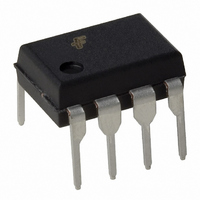FSQ0270RNA Fairchild Semiconductor, FSQ0270RNA Datasheet - Page 11

FSQ0270RNA
Manufacturer Part Number
FSQ0270RNA
Description
IC SWIT PWM GREEN OVP UVLO 8DIP
Manufacturer
Fairchild Semiconductor
Datasheet
1.FSQ0270RNA.pdf
(17 pages)
Specifications of FSQ0270RNA
Output Isolation
Isolated
Frequency Range
92 ~ 108kHz
Voltage - Input
8 ~ 20 V
Voltage - Output
700V
Power (watts)
24W
Operating Temperature
25°C ~ 140°C
Package / Case
8-DIP (0.300", 7.62mm)
Lead Free Status / RoHS Status
Lead free / RoHS Compliant
Available stocks
Company
Part Number
Manufacturer
Quantity
Price
Company:
Part Number:
FSQ0270RNA
Manufacturer:
FSC
Quantity:
27 000
Part Number:
FSQ0270RNA
Manufacturer:
FAIRCHILD/仙童
Quantity:
20 000
FSQ0170RNA, FSQ0270RNA, FSQ0370RNA Rev. 1.0.2
© 2006 Fairchild Semiconductor Corporation
Application Information
Methods of Reducing Audible Noise
Switching-mode power converters have electronic and
magnetic components, which generate audible noise
when the operating frequency is in the range of
20~20,000Hz. Even though they operate above 20KHz,
they can make noise, depending on the load condition.
The following sections discuss methods to reduce noise.
Glue or Varnish
The most common method of reducing noise involves
using glue or varnish to tighten magnetic components.
The motion of core, bobbin, and coil and the chattering
or magnetostriction of core can cause the transformer to
produce audible noise. The use of rigid glue and varnish
helps reduce the transformer noise. Glue or varnish can
also can crack the core because sudden changes in the
ambient temperature cause the core and the glue to
expand or shrink in a different ratio.
Ceramic Capacitor
Using a film capacitor instead of a ceramic capacitor as a
snubber capacitor is another noise reduction solution.
Some dielectric materials show a piezoelectric effect,
depending on the electric field intensity. Hence, a
snubber capacitor becomes one of the most significant
sources of audible noise. Another possibility is to use a
Zener clamp circuit instead of an RCD snubber for
higher efficiency as well as lower audible noise.
Adjusting Sound Frequency
Moving the fundamental frequency of noise out of the
2~4kHz range is the third method. Generally, humans
are more sensitive to noise in the range of 2~4kHz.
When the fundamental frequency of noise is located in
this range, the noise sounds louder although the noise
intensity level is identical (see Figure 19).
When the FPS acts in burst mode and the burst
operation is suspected to be a source of noise, this
method may be helpful. If the frequency of burst mode
operation lies in the range of 2~4kHz, adjusting the
feedback loop can shift the burst operation frequency. To
reduce the burst operation frequency, increase a
feedback gain capacitor (C
resistor (R
a feedback gain resistor (R
D
); and feedback capacitor (C
F
), as shown in Figure 20.
F
), opto-coupler supply
B
), and decrease
11
Other Reference Materials
AN-4134: Design Guidelines for Off-line Forward
Converters Using Fairchild Power Switch (FPS™)
AN-4137: Design Guidelines for Off-line Flyback
Converters Using Fairchild Power Switch (FPS™)
AN-4140: Transformer Design Consideration for Off-line
Flyback Converters using Fairchild Power Switch (FPS™)
AN-4141: Troubleshooting and Design Tips for Fairchild
Power Switch (FPS™) Flyback Applications
AN-4147: Design Guidelines for RCD Snubber of
Flyback
AN-4148: Audible Noise Reduction Techniques for
FPS™ Applications
Figure 20. Typical Feedback Network of FPS
Figure 19. Equal Loudness Curves
www.fairchildsemi.com









